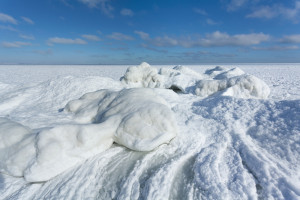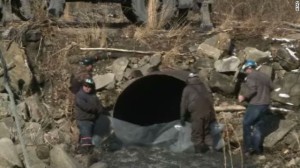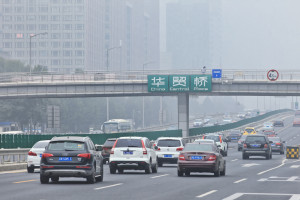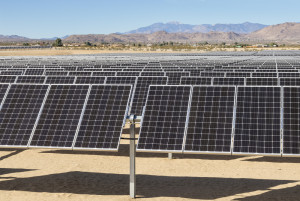 For the love of bees and, the end of winter as we know it, and another spill in West Virginia?
For the love of bees and, the end of winter as we know it, and another spill in West Virginia?
Listen to this week’s GD myEARTH360 Report podcast, and read below for ALL the deets . . .
There’s never a shortage of environmental news stories and this week, with Valentine’s Day, I thought it would be nice to start out by sharing some love.
What creature could be more deserving than bees? These amazing little buzzing creatures pollinate two thirds of our global food crops and they’re in trouble. Last year U.S. beekeepers reported 40-100 percent loss of their hives. Where would our Valentine’s Day roses and tulips be without bees? Don’t despair, there’s a way you can take action!
Another highlight: Senator Ted Cruz said, “If you’re a Birkenstock-wearing, tree-hugging Greenpeace activist…” you should love the Keystone XL Pipeline (the 1,179 mile long pipeline would move more than 800,000 barrels of crude oil from the Alberta tar sands in Canada to refineries on the Gulf Coast of Texas). Every single day. It’s not really a surprise that he’s pro-pipeline. But he also plans to introduce an energy bill that will focus on scaling down regulation and scaling up production in the oil and gas industry. That includes offshore exploration and, of course, fracking.
Then there’s the third coal-related spill in the last month contaminating a West Virginia waterway. Seriously? My heart goes out to those people.
And “steep declines” at ski resorts aren’t just reserved for double diamond runs. It’s the snow itself that’s on the decline. In the last 47 years, a million square miles of spring snow cover has disappeared from the Northern Hemisphere. Europe has lost half of its Alpine glacial ice since the 1850s. California is at just 12 percent of its average snowpack. About 70 million in the western United States rely on snowmelt for their fresh water supply!
Read on for the full myEARTH360 report — curated environmental stories from around the globe.
 For the Love of Bees, Take Action Against Bee-Killing Pesticides
For the Love of Bees, Take Action Against Bee-Killing Pesticides
The bee-killing pesticide neonicotinoid “hides” in more than half of the “bee friendly” garden plants sold at stores like Home Depot and Lowe’s. With no warning to consumers. In fact, many people are buying these with the intent of providing habitats for bees and other pollinators. Read the full story and learn how to take action…
Pesticides may be more dangerous than testing reveals, study finds
Testing of pesticides focuses on the active ingredient. But many other “inert” ingredients are added to the pesticide formulation that is actually sold. A new study suggests that these additives can make pesticides more dangerous to cells than current safety testing reveals.
A team of French scientists has concluded that studies focused solely on the active ingredients of commercially sold pesticides substantially underestimate their potential hazards. The study suggests that inert ingredients in pesticides can magnify the effects of active ingredients, sometimes as much as 1,000-fold. Eight commercial products out of nine tested were hundreds of times more toxic than their active ingredient alone.
Normally, tests of pesticide safety are carried out only on the active ingredient, the chemical that targets the pest. But pesticides sold to consumers and farmers are complex mixtures of other chemicals deemed “inert,” which implies these additives don’t have biological effects.
The scientists from the University of Caen exposed three human cell lines to the active ingredients of three herbicides, three insecticides and three fungicides. Then they exposed the cell lines to the commercial formulations, which contained “inerts,” and compared the results.
The new finding, if confirmed, has significant implications for pesticide safety because if inert ingredients commonly amplify pesticide effects, then safety standards may not be protective of human health. In the study, fungicides were on average the most toxic, followed by herbicides and then insecticides. Read the full story…
The End of Snow?
The planet has warmed 1.4 degrees Fahrenheit since the 1800s, and as a result, snow is melting. In the last 47 years, a million square miles of spring snow cover has disappeared from the Northern Hemisphere. Europe has lost half of its Alpine glacial ice since the 1850s, and if climate change is not reined in, two-thirds of European ski resorts will be likely to close by 2100.
The same could happen in the United States, where in the Northeast, more than half of the 103 ski resorts may no longer be viable in 30 years because of warmer winters. As far for the Western part of the country, it will lose an estimated 25 to 100 percent of its snowpack by 2100 if greenhouse gas emissions are not curtailed — reducing the snowpack in Park City, Utah, to zero and relegating skiing to the top quarter of Ajax Mountain in Aspen.
The facts are straightforward: The planet is getting hotter. Snow melts above 32 degrees Fahrenheit. The Alps are warming two to three times faster than the worldwide average, possibly because of global circulation patterns. Since 1970, the rate of winter warming per decade in the United States has been triple the rate of the previous 75 years, with the strongest trends in the Northern regions of the country. Nine of the 10 hottest years on record have occurred since 2000…Read the full NY Times story…
 4 Ways Putin’s Sochi Olympics are Harming the Environment
4 Ways Putin’s Sochi Olympics are Harming the Environment
If there was a Green medal in the Olympics, Putin would not win it.
Years ago, Russia won its Olympic bid in large part by pledging to host the most environmentally friendly Games ever. Now, however, it’s obvious that Sochi did not fulfill these promises and, in fact, has perpetrated an ecological nightmare.
Here are four reasons even the most casual environmentalists will resent Sochi’s actions:
1. Illegally Dumping Waste
So much for Sochi’s “zero waste” claims: the Associated Press has proven Russia’s vow to use only renewable materials in their construction efforts and not dump waste false. Though the nation tried to hide this dumping, the press agency found literal tons of waste being dumped unsafely in a protected area. Read the full story…
Officials: Coal slurry spill blackens 6 miles of West Virginia creek

Inspectors are looking into the cause of a coal slurry spill in West Virginia’s eastern Kanawha County after it blackened six miles of a creek, officials with the state Department of Environmental Protection said Tuesday.
More than 100,000 gallons of the coal slurry is believed to have flowed into Fields Creek, a tributary of the Kanawha River, officials said. Inspectors are testing the water to determine exactly how much leaked into the creek, the officials said.
The spill at Patriot Coal was caused when a valve inside a slurry line malfunctioned, the state environmental protection officials said.
Containment efforts by Patriot Coal began immediately, and cleanup activities are underway, said Janine Orf, a vice president at Patriot Coal. Read the full story on CNN…
 China’s Plan to Clean Up Air in Cities Will Doom the Climate, Scientists Say
China’s Plan to Clean Up Air in Cities Will Doom the Climate, Scientists Say
China is erecting huge industrial complexes in remote areas to convert coal to synthetic fuel that could make the air in its megacities cleaner. But the complexes use so much energy that the carbon footprint of the fuel is almost double that of conventional coal and oil, spelling disaster for earth’s climate, a growing chorus of scientists is warning.
Efforts by China to develop so-called “coal bases” in its far-flung regions have received scant attention beyond the trade press, but scientists watching the effort say it could cause climate damage that eclipses worldwide climate protection efforts.
The facilities, which resemble oil refineries, use coal to make liquid fuels, chemicals, power and “syngas,” which is like natural gas but extracted from coal. The fuels and electricity are then transported to China’s big cities to be burned in power plants, factories and cars.
Currently 16 coal base sites are being built and many are operational. One being constructed in Inner Mongolia will eventually occupy nearly 400 square miles—almost the size of the sprawling city of Los Angeles.
Driving China’s desire to create coal bases are its soaring energy demand, abundant coal resources, lack of inexpensive alternatives and the need to move coal power production out of its cities—which are already drowning in smog from dirty coal plants. Meanwhile, its energy-hungry economy is booming to meet insatiable demands of consumers in America and Europe for cheaply manufactured products. Read the full Inside Climate News story…
Huge thermal plant opens as solar industry grows
A windy stretch of the Mojave Desert once roamed by tortoises and coyotes has been transformed by hundreds of thousands of mirrors into the largest solar power plant of its type in the world, a milestone for a growing industry that is testing the balance between wilderness conservation and the pursuit of green energy across the West.
The Ivanpah Solar Electric Generating System, sprawling across roughly 5 square miles of federal land near the California-Nevada border, formally opens Thursday after years of regulatory and legal tangles ranging from relocating protected tortoises to assessing the impact on Mojave milkweed and other plants.
The $2.2 billion complex of three generating units, owned by NRG Energy Inc., Google Inc. and BrightSource Energy, can produce nearly 400 megawatts — enough power for 140,000 homes. It began making electricity last year.
Larger projects are on the way, but for now, Ivanpah (EYE’-ven-pah) is being described as a marker for the United States’ emerging solar industry. While solar power accounts for less than 1 percent of the nation’s power output, thousands of projects from large, utility-scale plants to small production sites are under construction or being planned, particularly across the sun-drenched Southwest. The opening of Ivanpah is “a dawn of a new era in power generation in the United States,” said Rhone Resch, president of the Solar Energy Industries Association, a trade group. “We are going to be a global leader in solar generation.” Read the full story…

Ted Cruz Makes Case for Keystone XL to ‘Birkenstock-Wearing, Tree-Hugging’ Activists
If you love the environment, Sen. Ted Cruz says you should love the Keystone XL pipeline too.
“If you’re a Birkenstock-wearing, tree-hugging Greenpeace activist, you should love the Keystone pipeline,” Cruz said at the Heritage Action’s Conservative Policy Summit on Monday.
Cruz, R-Texas, focused his remarks on a push to deregulate the controversial practice of hydraulic fracking and expanding offshore exploration, and in the process, appealed to any environmentalists listening in on his remarks.
“The Canadians are not going to leave the tar sands unmolested,” Cruz said. “They’ll send it to China to be refined there and it will be refined in a much, much dirtier way.
“If your concern is the environment, the last thing you want to do is send that oil to China to be refined there, which
will be far more damage to the environment than refining it in the U.S., where it would generate good, high paying jobs,” he added.
Environmentalists have a host of concerns about the 1,179-mile pipeline, including fears that it could leak into the Ogallala Aquifer, which it would cross in South Dakota and Nebraska, but Cruz brushed their concerns aside.
“And as long as there are (sic) oil on tankers, there will be spills,” Cruz said. Read the full ABC News story…
6 Ways Ted Cruz Wants To Increase Carbon Pollution, All In One Bill
Cruz, speaking at the Heritage Action for America’s Conservative Policy Summit in D.C., said he was introducing the American Energy Renaissance Act to stop the federal government from preventing America’s “energy renaissance” — the ability to access underground natural gas and oil stores that Cruz said is “providential blessing” for the country. The announcement heralds a change of focus for Cruz, who has devoted much of his attention over the last few months to Obamacare and gun rights. Read the full ThinkProgress story…
Bill McKibben’s message to Obama: Say No to Big Oil!
Van Jones debunks myths about Keystone XL Pipeline
Your Voice Counts!
The public comment period about the Keystone XL Pipeline is open through March 7, 2014. Add your voice today! You can also mail a letter postmarked no later than Friday March 7th.
Bee Valentine image via Shutterstock
Snowy image via Shutterstock
Olympic logo image via Shutterstock
Air pollution in China image via Shutterstock
Solar plant in Desert image via Shutterstock
Ted Cruz image via Shutterstock
Green Diva Meg
February 13, 2014 at 7:40 pm
another excellent and well-researched post by GD Lynn!
Green Diva Lynn
February 13, 2014 at 8:12 pm
Thanks, GD Meg! 🙂
Green Diva Gina
February 14, 2014 at 9:25 am
I had no idea that close to 70 million people in the US rely on snowmelt as a water source. Thanks for the info, Green Diva Lynn. Your posts are always so insightful.
Green Diva Lynn
February 14, 2014 at 4:56 pm
Glad you find my posts insightful. And it’s great chatting with you fellow Divas about these things!
Pingback: Valentine's Love for Bees and More Environmental News | Care2 Healthy Living